$Tyson(TSN)$After yesterday's financial report, it rose by 12%, setting a record high. This picture illustrates a lot about the benefits of financial report release.
It may also be briefly summarized as the following two points:
1 revenue and EPS growth are objective, which greatly exceeds analysts' expectations
In the first quarter, Non-GAAP EPS was $2.87, an increase of $0.94 over the same period of last year. Revenue was $12.93 billion (up 23.6% year-on-year), which was $760 million higher than analysts expected.
2 The annual guidance given by the company is at the high end of the previous forecast
Tyson Foods reiterated its full-year performance forecast, that is, sales increased by 2-3%, with sales of 49-51 billion US dollars, estimated at 50.35 billion US dollars.
Adjusted operating margins for processed foods are 7-9%, beef 9-11% and chicken and pork 5-7%.
About Tyson Food, if you don't know it, this passage may help you build some knowledge about it:
Tyson Foods is one of the largest meat processors in the world. The company's products are diversified, selling beef, pork, chicken and prefabricated food; And the geographical coverage is wide, and it will be sold in 145 countries/regions in fiscal year 2020.
The company produces about 20% of beef, pork and chicken in the United States. In addition to the United States, the company's major markets include the European Union, the Middle East, Canada, Mexico, Central America, Chile, China, Japan, Malaysia, South Korea, Taiwan and Thailand.
According to the revenue segment divided by financial report, the company's product categories are mainly beef, chicken, prefabricated products and pork. In the latest quarter's financial report data, the beef business sales of Tai Sen Food were 5.002 billion US dollars, a year-on-year increase of about 25%; The sales of chicken business was 3.89 billion US dollars, a year-on-year increase of about 37%; The sales of prefabricated food business was 2.333 billion US dollars, a year-on-year increase of about 10%; Sales of pork business were US $1.626 billion, up about 13% year-on-year.
Total meat sales increased slightly by 0.3% in the first quarter, and the company's revenue increased by 24%, which was due to the price increase. Inflation is one of the hottest words in the current market, and the ability of Tai Sen Food to raise prices deserves the attention of people moved by this hot word. In the first quarter, the company's performance was bright. If you ever bet on inflation with Tyson Food, you have already taken the lead. In the first quarter, the price increase of various meat varieties of the Company is shown in the following figure:
Beef, as the division with the largest proportion of the company's revenue, has the highest price increase, reaching 31.7%; The operating profit margin is also the highest, at 19.1%. With 39% of revenue, it contributed 67% of operating profit.
Whereas$Tyson(TSN)$This round of rally has lasted for 14 months. If you intervene in the company at this time, I think the first thing to answer should be the valuation question. Originally, the food industry is prone to underestimate its reputation, and Tai Sen Food is no exception. Going to see the company's static PE just around 12 will deepen this impression. Because the average value of the whole industry is about 20.
However, I have collected two valuation cases of the company in the market, one is discounted by free cash flow, and the other is classified and summed up. The target price given by the company has been reached. Examples are as follows:
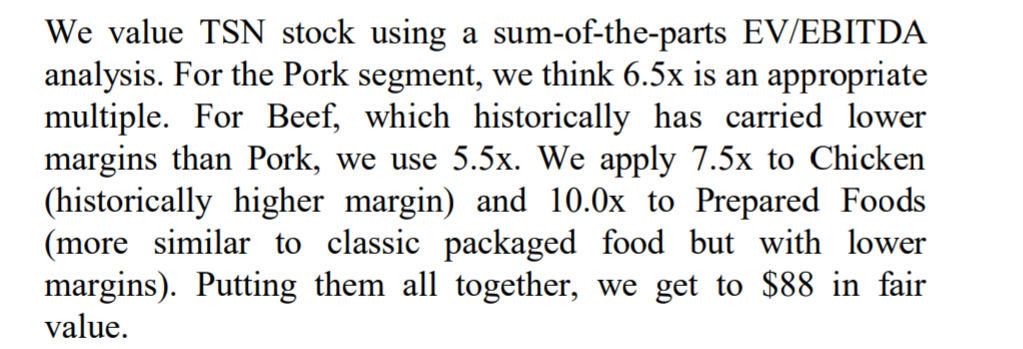
1 Productivity Planning
The company plans to improve its productivity. This plan consists of three components.
The objective is to reduce recurrent savings by $300 million through the elimination of bureaucracy and internal efficiency gains in finance, human resources and procurement.
The goal is to improve the efficiency and operation of supply chain planning, logistics and warehousing by using digital solutions such as artificial intelligence and predictive analysis, thus saving 250 million US dollars.
In addition, Tyson plans to invest $1.3 billion in automation over the next three years. This is partly to alleviate the shortage of available labor.
In the long run, no matter how the supply and freight costs rise, this will reduce its production costs. The management expects its automation work to save 450 million US dollars every year.
2 High debt
At the end of the first quarter, the company had $2.55 billion in cash and cash equivalents on hand, while total debt was $9.36 billion. The net debt burden is quite large, which is worth pondering.
However, if you escape from these valuation games and fundamental metaphysics and only take the technical new high as an indicator, perhaps you have your own operational ideas.
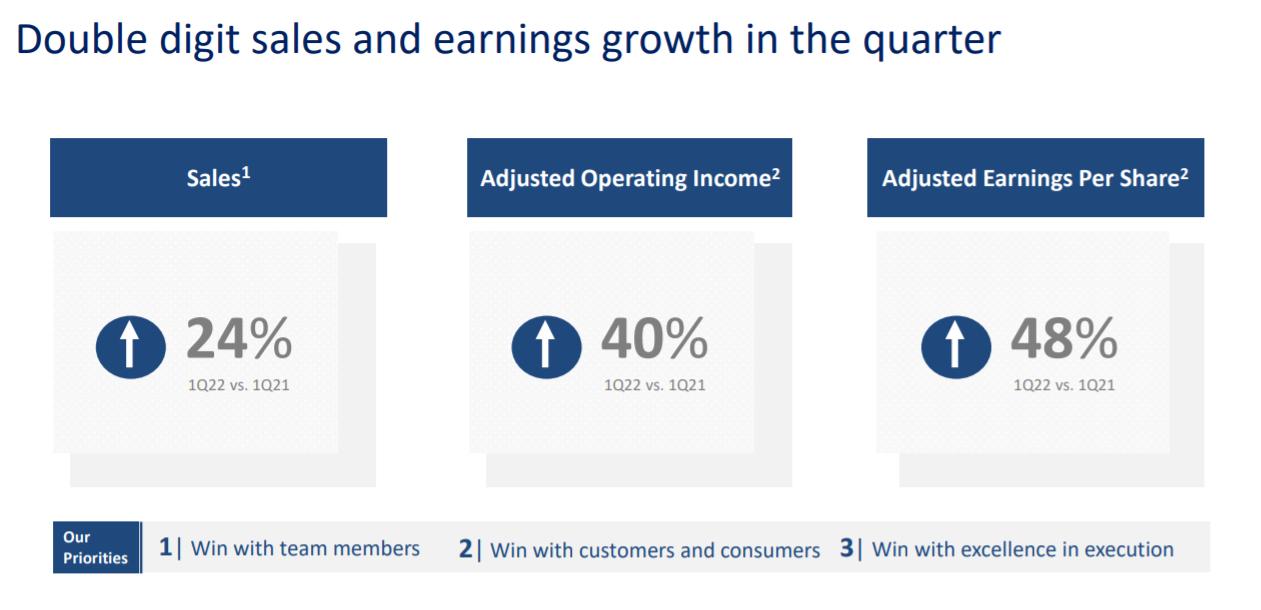
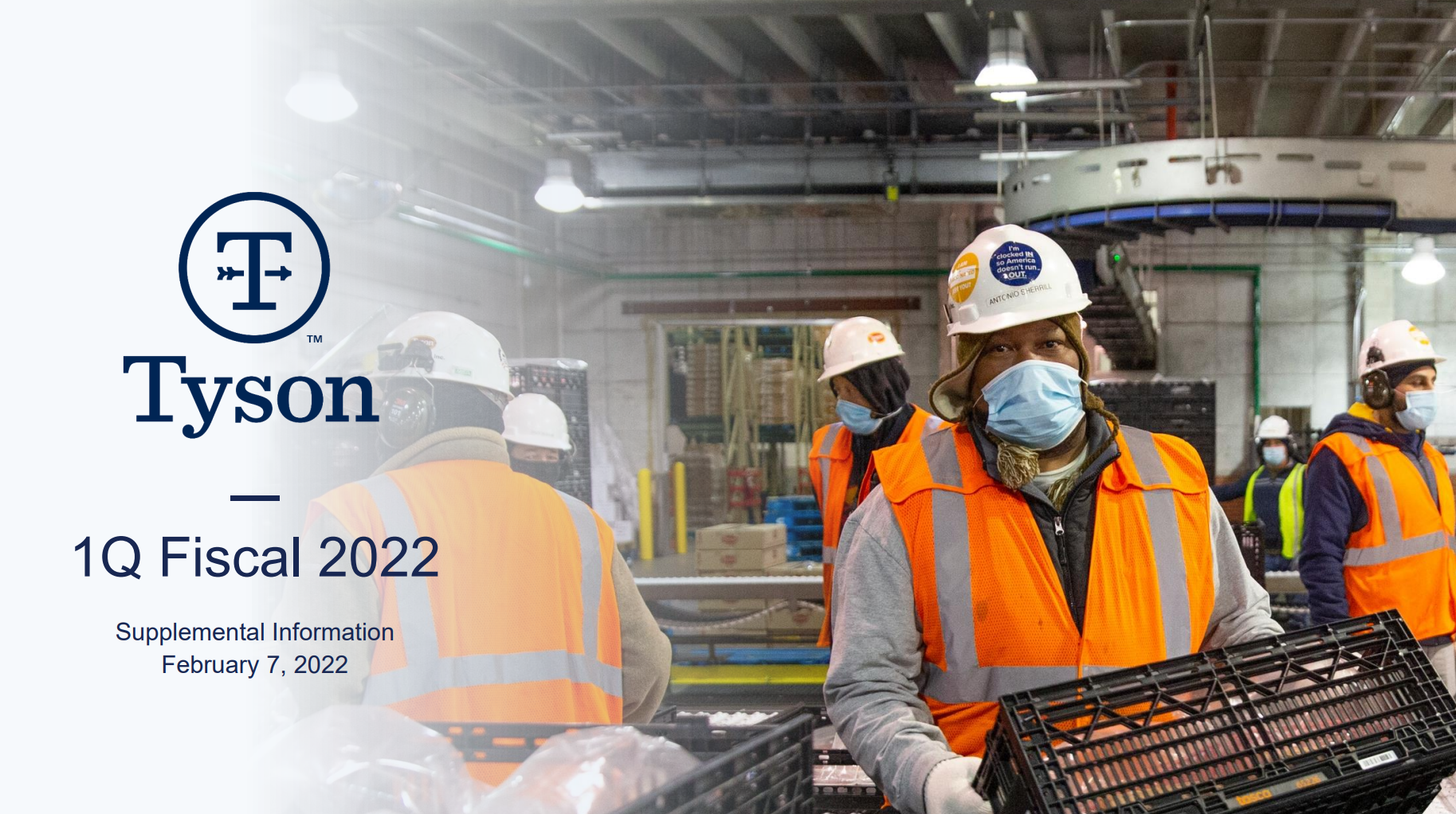
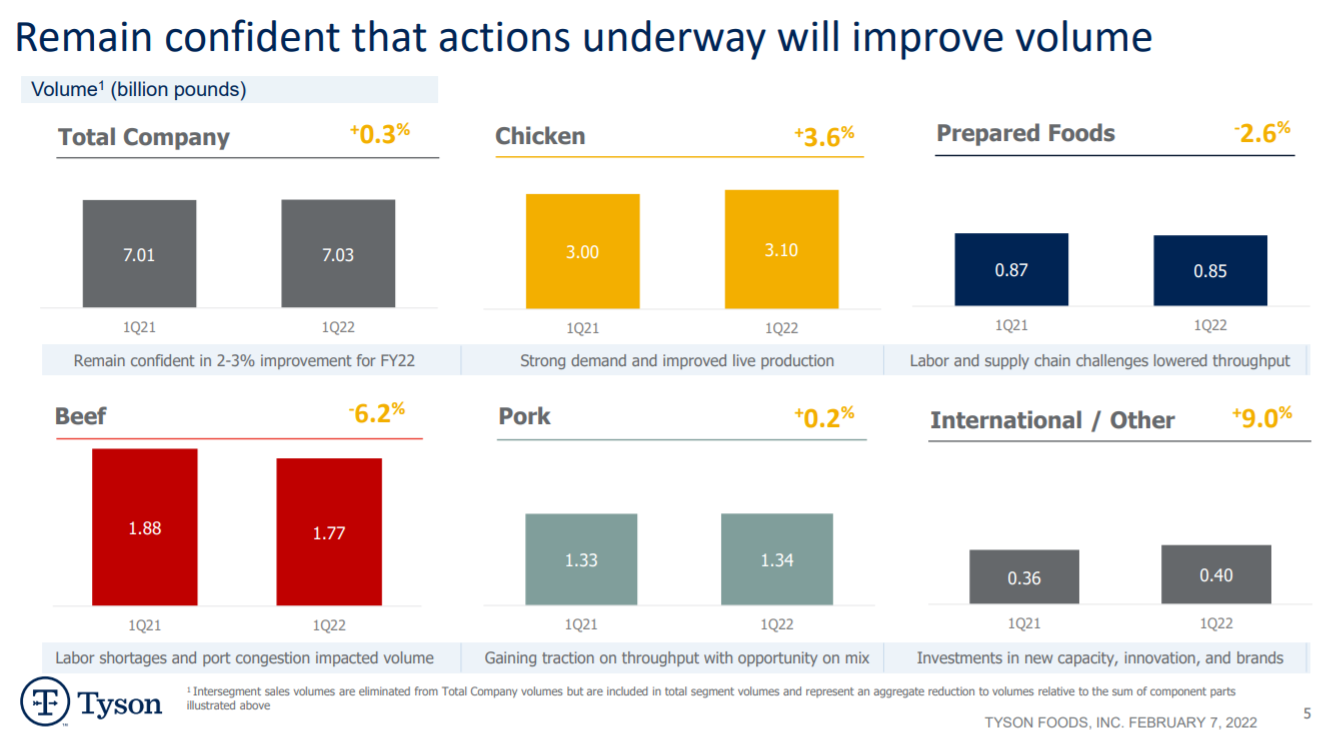
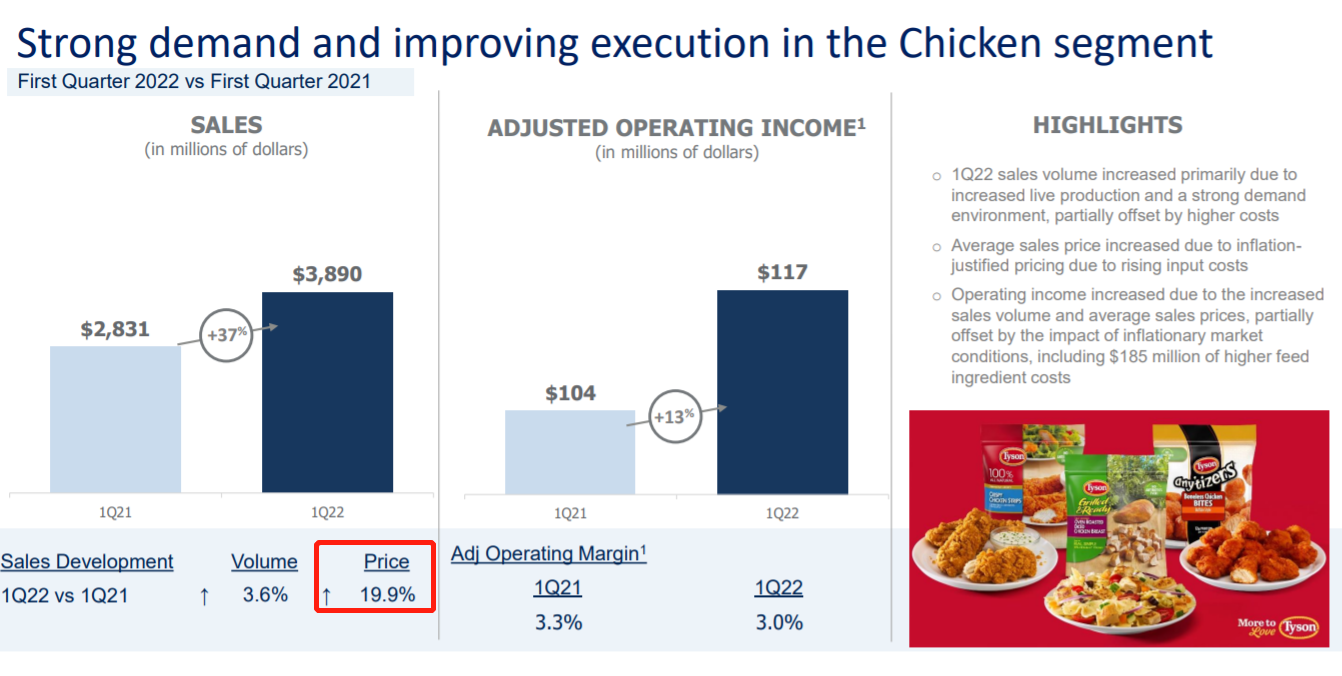
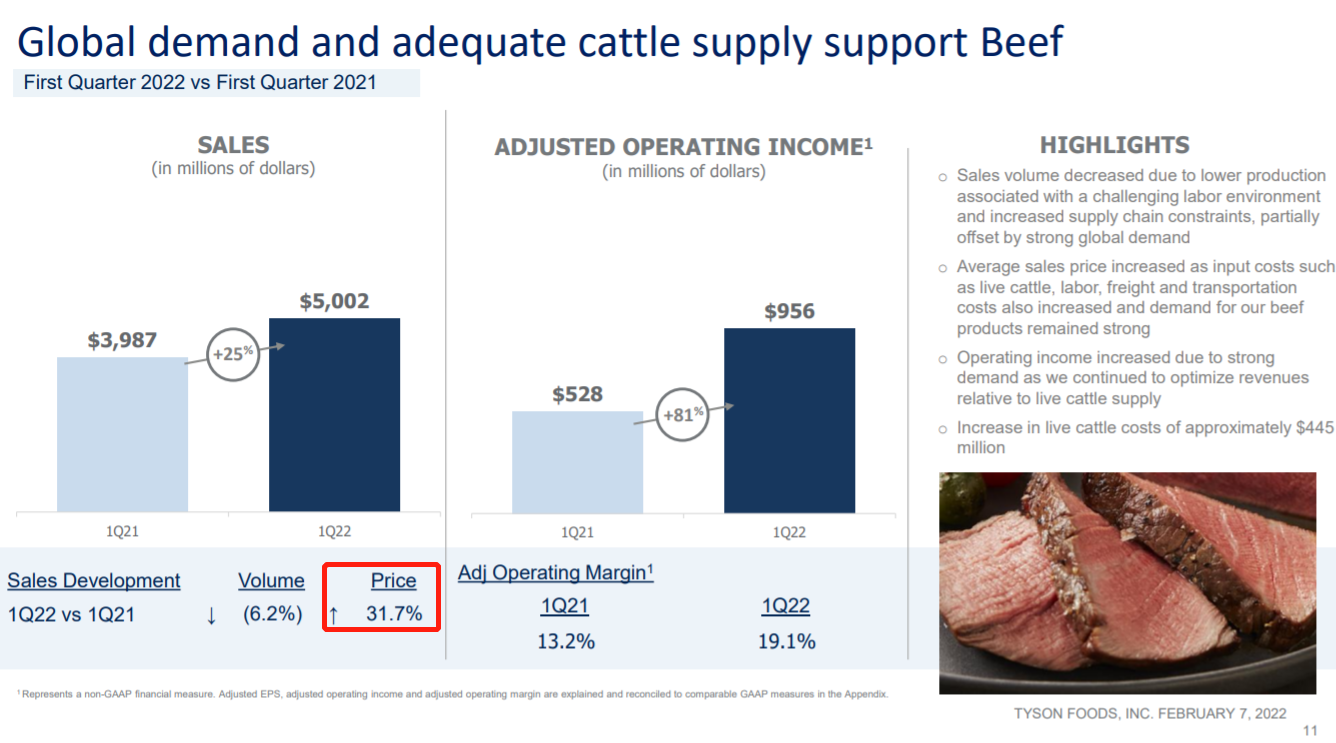
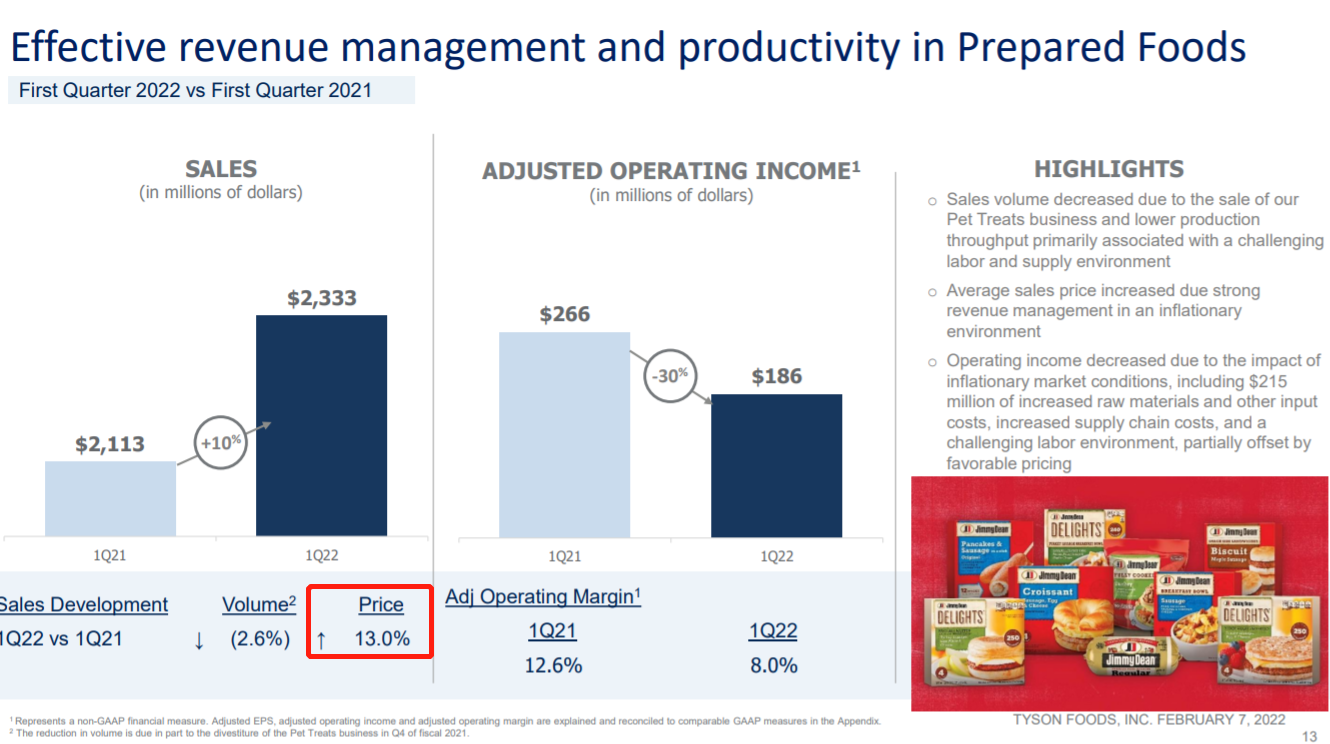
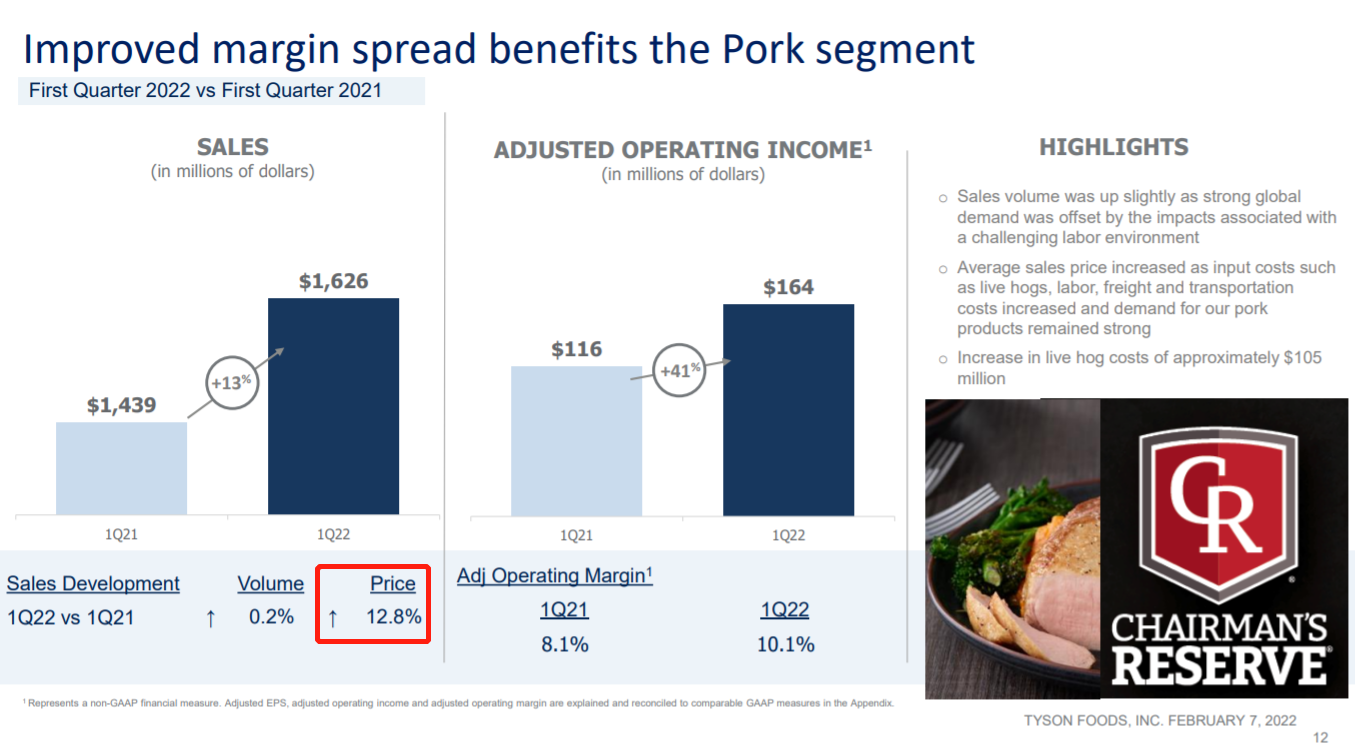
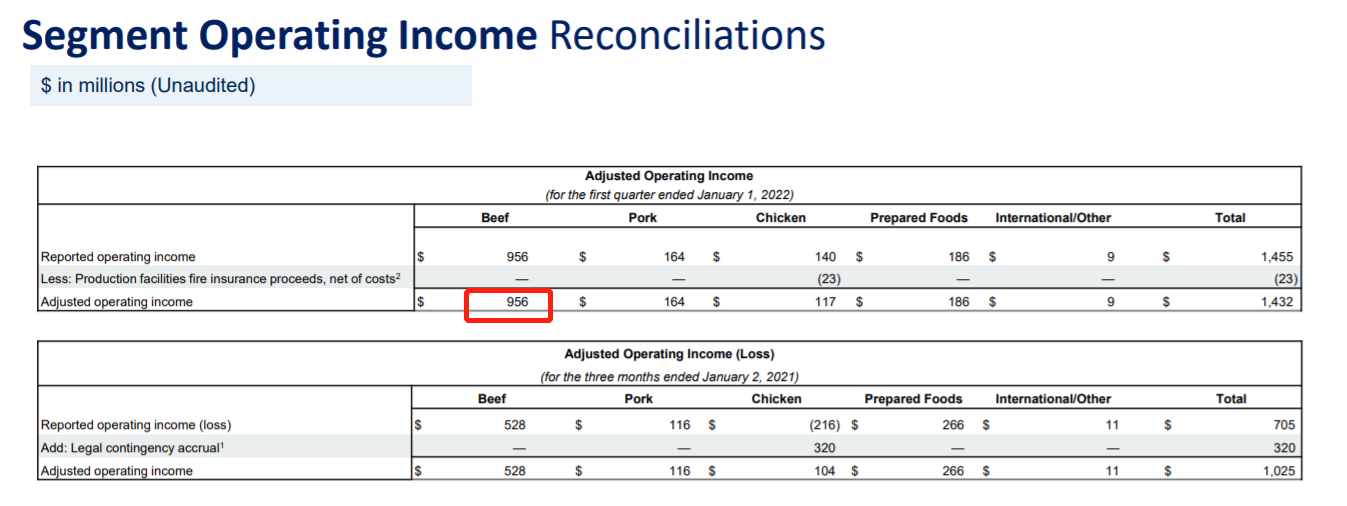
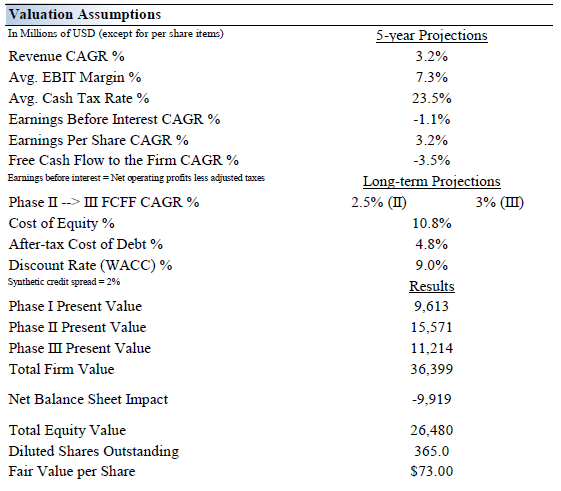
Comments